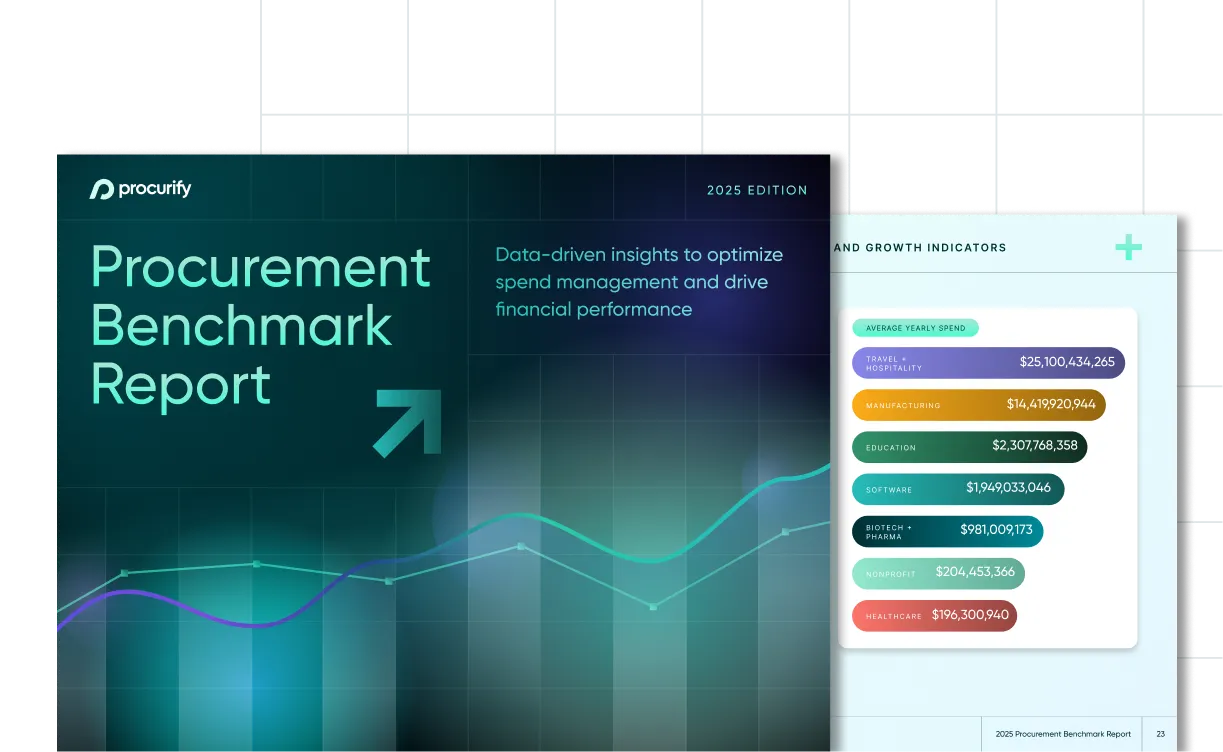
PunchOut Catalogs Explained: How They Work, Benefits, and Best Use Cases
As organizations grow, inefficiencies in procurement tend to multiply. Manual processes, fragmented systems, and inconsistent vendor management can quickly lead to wasted time and higher costs. While procurement is often overlooked as a driver of savings, technologies like PunchOut Catalog solutions offer a powerful way to increase efficiency and control.
PunchOut Catalogs integrate directly with procure-to-pay software, allowing employees to purchase from approved vendors without leaving their procurement system. This eliminates error-prone data entry, accelerates request workflows, and helps organizations capture savings through accurate pricing and bulk discounts, benefits now being realized across industries from healthcare to manufacturing
What is a PunchOut Catalog?
A PunchOut Catalog, sometimes called a PunchOut Website or PunchOut Marketplace, is a type of e-commerce integration used in B2B procurement. Unlike a traditional online store, where employees must leave their company’s system to shop, a PunchOut Catalog connects the supplier’s catalog directly to the organization’s vendor management system. This creates a seamless, compliant buying experience without duplicate logins or manual data entry.
The integration is typically powered by protocols such as cXML (commerce eXtensible Markup Language).
In practice, requesters can browse supplier catalogs, including well-known vendors like Amazon, Staples, or Home Depot, add items to a requisition within their procurement software, and route it for approval. Once approved, the purchase order is automatically sent to the supplier, who fulfills and ships the order without any extra steps for the buyer.
How does a PunchOut Catalog work?
Requisition
When a requester initiates an Order Request for a specific supplier, they are redirected to that supplier’s PunchOut Catalog. The PunchOut Catalog provides a familiar shopping experience to the buyer, allowing them to browse products, view details, and add items to their shopping cart. As the buyer selects items, the data is synchronized with their procurement softwares in real time, eliminating the need to copy and paste item details.
Approval & Purchase
Once the buyer has finished selecting items, they can then submit their request for approval. The order request page will then be populated with the details of the items the requester has added, removing the need for manual, error-prone data entry. Once approved via their pre-determined approval routing workflows, a Purchase Order is generated and items are automatically purchased.
Receiving
The supplier receives the order information and proceeds with order fulfillment and shipping. Once the items are received, team members can then leverage the receiving module in their procurement platform to gain insights into what was delivered, who received it, and when.
What are the benefits of using a PunchOut Catalog?
A PunchOut Catalog simplifies purchasing by connecting supplier catalogs directly to your procurement system. Instead of visiting multiple supplier websites, logging in separately, and re-entering product details, employees can browse approved catalogs, add items to a requisition, and submit them for approval without ever leaving the platform.
This integration reduces manual data entry errors, ensures accurate product and pricing information, and allows buyers to take advantage of negotiated contract terms, all while streamlining the entire procurement process from request to purchase order
Buyer benefits:
-
Streamlined procurement process:
PunchOut Catalogs integrate with the buyer’s procurement system, enabling a seamless purchasing experience. Buyers can access supplier catalogs, browse products, and place orders without leaving their procurement platform.
-
Real-time catalog updates:
Buyers see accurate pricing, availability, and product information in real-time. This ensures that they always have up-to-date information while making purchasing decisions.
-
Improved accuracy:
PunchOut Catalogs eliminate manual data entry errors, as product selections and order details are automatically synchronized between the buyer’s procurement softwares and the supplier’s catalog.
-
Leveraging negotiated pricing:
Buyers can take advantage of negotiated pricing agreements or contract terms directly within their procurement system. The PunchOut Catalog reflects the agreed-upon pricing, ensuring consistency and facilitating adherence to contract terms.
Supplier benefits:
-
Enhanced customer experience:
Offering a PunchOut Catalog improves the buying experience for customers. By integrating with the buyer’s procurement system, suppliers make it easier for customers to access their catalogs, browse products, and place orders, resulting in a more seamless and convenient purchasing process.
-
Increased sales opportunities:
PunchOut Catalogs can help suppliers capture more sales by simplifying the buying process for customers. The integration eliminates barriers, such as manual data entry or the need to navigate separate websites, making it more likely for customers to complete their purchases.
-
Efficient order management:
The integration between the supplier’s PunchOut Catalog and the buyer’s procurement softwares streamlines the order management process. Purchase requisitions or orders are automatically transmitted to the supplier’s system, reducing the need for manual order processing and improving order accuracy.
-
Better visibility and analytics:
PunchOut Catalogs provide suppliers with valuable insights into customer behavior, purchase patterns, and product preferences. Suppliers can gather data on customer interactions within the PunchOut Catalog, helping them identify trends, optimize their offerings, and make informed business decisions.
Which industries commonly use PunchOut Catalogs?
Any organization that must procure goods and services to empower its team members can benefit from PunchOut integrations. Here are some industries that commonly use PunchOut Catalogs:
-
Healthcare and Medical Supplies:
The healthcare industry often relies on PunchOut Catalogs for procuring medical supplies, equipment, pharmaceuticals, and other healthcare-related products. Hospitals, clinics, and healthcare organizations integrate PunchOut Catalogs with their procurement softwares to streamline the purchase of necessary supplies while ensuring compliance with specific regulations and contract pricing.
-
Manufacturing and Industrial:
Manufacturing and industrial sectors frequently employ PunchOut Catalogs to streamline procurement processes for raw materials, machinery, equipment, spare parts, and other industrial supplies. PunchOut Catalog integration allows manufacturers to access the catalogs of their trusted suppliers directly from their procurement systems, facilitating efficient sourcing and procurement operations.
-
Information Technology (IT) and Software:
IT companies and organizations often utilize PunchOut Catalogs for procuring hardware, software, IT services, and other technology-related products. PunchOut integration enables seamless access to the catalogs of IT suppliers, ensuring accurate product information, pricing, and configuration options directly within the procurement softwares used by IT teams.
-
Government and Public Sector:
PunchOut Catalogs are commonly adopted in government agencies and public sector organizations. These entities often have strict procurement procedures and contract compliance requirements. PunchOut Catalogs help streamline the purchasing of goods and services, ensuring transparency, adherence to established contracts, and efficient procurement processes.
-
Education and Higher Education:
Educational institutions, such as schools, colleges, and universities, utilize PunchOut Catalogs for procuring educational resources, textbooks, laboratory equipment, and other supplies needed for academic purposes. PunchOut integration simplifies the procurement process for educational staff, allowing them to access catalogs and place orders directly within their e-procurement systems.
-
Hospitality and Food Services:
The hospitality industry, including hotels, restaurants, and catering services, relies on PunchOut Catalogs for procuring food and beverage products, kitchen supplies, furniture, and other hospitality-related items. PunchOut integration enables seamless ordering of products from suppliers, ensuring accurate pricing, real-time inventory updates, and efficient order management.
-
Construction and Building Materials:
In the construction industry, PunchOut Catalogs are commonly used to streamline the procurement of building materials, construction equipment, tools, and related supplies. PunchOut integration allows construction companies and contractors to access catalogs of suppliers, view product specifications, compare pricing, and place orders directly from their procurement systems.
-
Office Supplies and Stationery:
Many businesses and organizations across various industries leverage PunchOut Catalogs for procuring office supplies, stationery, furniture, and other workplace essentials. PunchOut integration enables employees to access supplier catalogs within their e-procurement systems, simplifying the ordering process and ensuring consistency in pricing and product availability.
While these industries commonly use PunchOut Catalogs, the applicability of this procurement method is not limited to these sectors. PunchOut Catalogs can be beneficial in any industry that engages in B2B transactions and seeks to optimize its procurement processes, improve efficiency, and maintain control over purchasing activities.
Can a PunchOut Catalog support multiple suppliers?
Yes. One of the biggest advantages of PunchOut Catalogs is their ability to consolidate multiple supplier catalogs into a single procurement interface. Instead of toggling between websites or managing separate logins, buyers can access a unified catalog, compare offerings side by side, and submit requisitions through the same procurement system.
For procurement teams, this centralization supports supplier onboarding and optimization. New suppliers can be added into the PunchOut environment with agreed-upon terms, pricing, and compliance requirements already embedded. Buyers gain a more efficient way to compare vendors on cost, quality, and availability, while procurement leaders gain stronger oversight of supplier performance and contract adherence.
Suppliers also benefit. A PunchOut Catalog gives them greater visibility with customers, increases the likelihood of repeat purchases, and reduces friction in order processing. By integrating directly into the buyer’s procurement workflow, suppliers can strengthen relationships, secure preferred-vendor status, and optimize how their products are positioned alongside competitors.
Can a PunchOut Catalog support custom pricing or negotiated contracts?
Yes. One of the most valuable features of a PunchOut Catalog is its ability to support custom pricing and negotiated contracts. Instead of relying on generic supplier pricing, buyers can access the exact terms, discounts, and contract conditions that have been agreed upon with their vendors directly within their vendor procurement system.
This makes purchasing more accurate, compliant, and cost-effective.
How it works:
Contract configuration: Suppliers configure their PunchOut Catalogs to reflect pricing tiers or custom rules based on the buyer’s agreements. This can be applied to specific products, categories, or entire contracts.
Authentication and identification: When a buyer logs in through their procurement system, they are recognized by unique credentials, ensuring the correct pricing and terms are applied.
Custom pricing display: As buyers browse and add items, the catalog shows their negotiated prices, including volume discounts or special arrangements.
Real-time updates: Catalogs sync with contract terms in real time, ensuring pricing is always accurate and up to date.
Requisition generation: Once items are added, the procurement system captures the negotiated terms, generating purchase requisitions or POs that reflect contract pricing automatically.
By embedding contract terms directly into the buying process, PunchOut Catalogs ensure compliance with supplier agreements, reduce pricing discrepancies, and help organizations capture the full value of their vendor negotiations.
For procurement leaders focused on supplier optimization, this feature strengthens control, improves vendor relationships, and maximizes savings across the supplier base.
By supporting custom pricing or negotiated contracts, it enables buyers to leverage their negotiated contracts and obtain the most favorable pricing based on their specific agreements, leading to cost savings and improved procurement outcomes.
Streamline purchasing with PunchOut Catalogs
Implementing a PunchOut Catalog transforms procurement by connecting supplier catalogs directly with your organization’s procurement system. The results are clear: streamlined purchasing, real-time pricing and inventory updates, customized contract terms, and closer collaboration with suppliers.
By adopting PunchOut technology, businesses can reduce manual errors, improve visibility, and ensure compliance with negotiated agreements. More importantly, PunchOut Catalogs help organizations strengthen supplier relationships and optimize procurement strategies—unlocking cost savings and efficiency gains that drive long-term success in a competitive marketplace.
PunchOut Catalogs are most powerful when they’re part of a complete vendor management strategy. See how a vendor management tool can centralize supplier data, streamline approvals, and strengthen vendor relationships across your organization.

2025 Procurement Benchmark Report
Powered by $20B+ in proprietary data you won’t find anywhere else.

